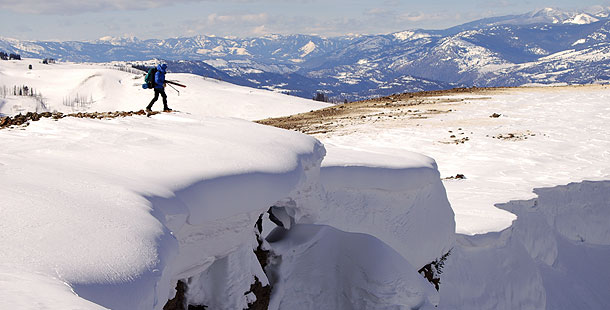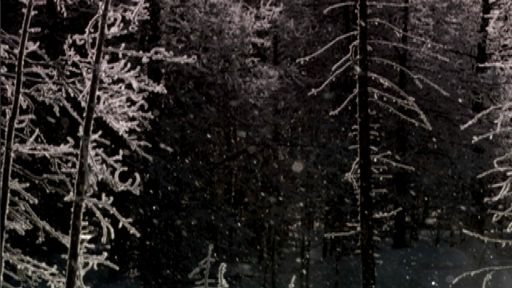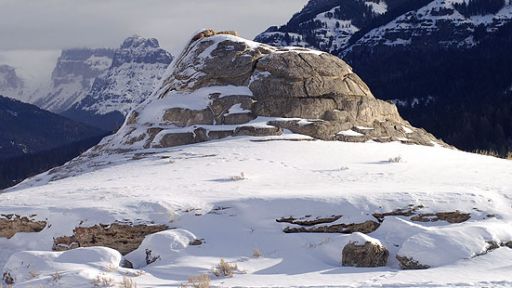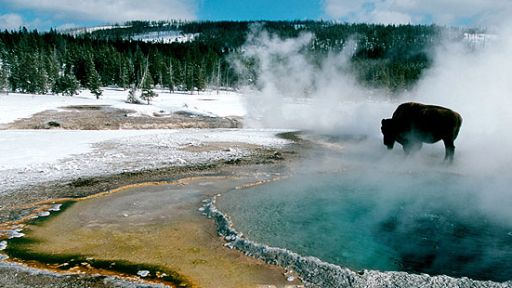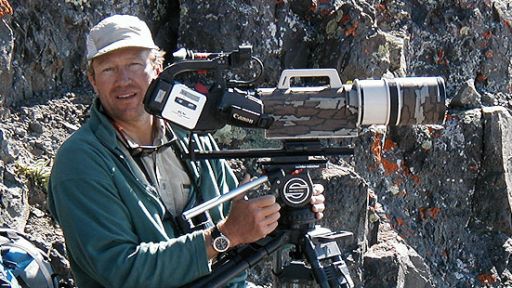For the individual brave enough to embark on a mid-winter wilderness expedition, nature may offer a sense of grace and solitude unobtainable during the crowded summer camping season. Such serenity comes at a cost, however, as the risk of potential dangers is virtually without limit.
There’s no need to panic, of course, so long as one realizes that the key to making it safely in and out of the woods is very careful planning. Every aspect of a winter camping trip should be planned in advance: how many people are going and where exactly they will be traveling, down to the trails they intend to take. Camping reservations or permits may be needed and can be acquired by contacting a ranger’s station. Before leaving, know what the likely weather conditions will be in the area to be traversed, how much snow is on the ground, what time the sun will set — and don’t forget to set aside time to break in those new boots!
It will be easier to keep track of things properly with a supply checklist. Everything should be accounted for: clothing, shelter, food, water, personal equipment. The most important word to remember when considering clothing is layers. Adjustable layers will allow a hiker to add or subtract insulation as his or her body temperature fluctuates. It is never a good idea to sweat excessively, since body heat is lost much quicker when wet, so adjust accordingly. Wool or synthetic clothing, like pile or polypropylene, are preferable — never wear cotton or jeans. Since up to 70-percent of the body’s heat can be lost through the head, a warm hat is indispensable. A balaclava, or ski mask, is recommended for its versatility. Socks should be worn in layers, a gaiter is necessary to prevent snow from getting in boots, and mittens are warmer than gloves. Protect against the elements with a well-ventilated and weatherproof outer layer for the wind and the wet, and sunglasses (or goggles) and sunscreen for the sun — which will be magnified by a snowy surface and could potentially result in snow blindness.
Inexperienced trekkers are advised against attempting long trips. It’s better to begin with a day trip or an overnight as a way of testing one’s capabilities. For those embarking on a longer journey, shelter will be a fundamental consideration. Snow caves and igloos are an effective way of finding shelter in the wild, although a tent will also work. Dome tents shed snow well and provide a good deal of interior space, which is all the more important in winter when there is extra gear. Never cook in a tent since this can lead to carbon monoxide poisoning. Be sure to eat, though. Appetites tend to diminish during wintertime activities, but the body actually needs more fuel than usual. It is also vital to keep hydrated, so put some thought into where to find water — a river, beneath the frozen surface of a stream or lake. Water from such places will need to be purified and the best way to purify water in winter is to boil it (at least three to five minutes, adding one minute for every 1,000 feet above sea level). Filtration pumps can freeze and crack and chemical treatments, such as iodine and chlorine, are rendered ineffective at colder temperatures. One can also melt snow over the stove, although this will use up fuel (and never eat snow, this takes up too much energy!). In terms of equipment, make sure to have a sufficiently warm sleeping bag, one that is rated for a temperature lower than that expected, and a ground pad at least half an inch thick. Internal frame packs are generally better for winter use than external frames, and if this is a backcountry expedition, it is likely to require either snowshoes or cross-country skis.
This only covers the basics, actually, because really anything could happen and one must be prepared for simply everything. At Yellowstone National Park, for instance, visitors are advised: “There are dangers inherent in wilderness: unpredictable wildlife, changing weather conditions, remote thermal areas, deep snow, open streams, and rugged mountains with extreme avalanche danger. When you choose to explore Yellowstone, you experience the land on its own terms; there is no guarantee of your safety. Be prepared for any situation. Carefully read all backcountry guidelines and regulations, and know the limit of your ability.” This last point seems particularly important. Being prepared for a wilderness trip means not only knowing what to prepare for, but what to do if those preparations go afoul. Dehydration, food poisoning, diarrhea. These are relatively common afflictions that any wintertime traveler should anticipate and be ready to manage. Accidental falls, stove explosions, the collapse of a tent overburdened with snow, ice axe or crampon stabbing injuries. (There is a whole list of these — better to be prepared for them all.) Learn how to identify precarious crevices hidden beneath the snow as well as loose branches in the trees that, in high winds, could potentially fall on one’s tent in the middle of the night. Be able to recognize and avoid avalanche territory. Know what to do during an ice crossing or a sudden whiteout. Don’t travel alone, bring a first aid kit, and, before leaving, be certain to inform a friend or loved one of the destination and expected time of return.

